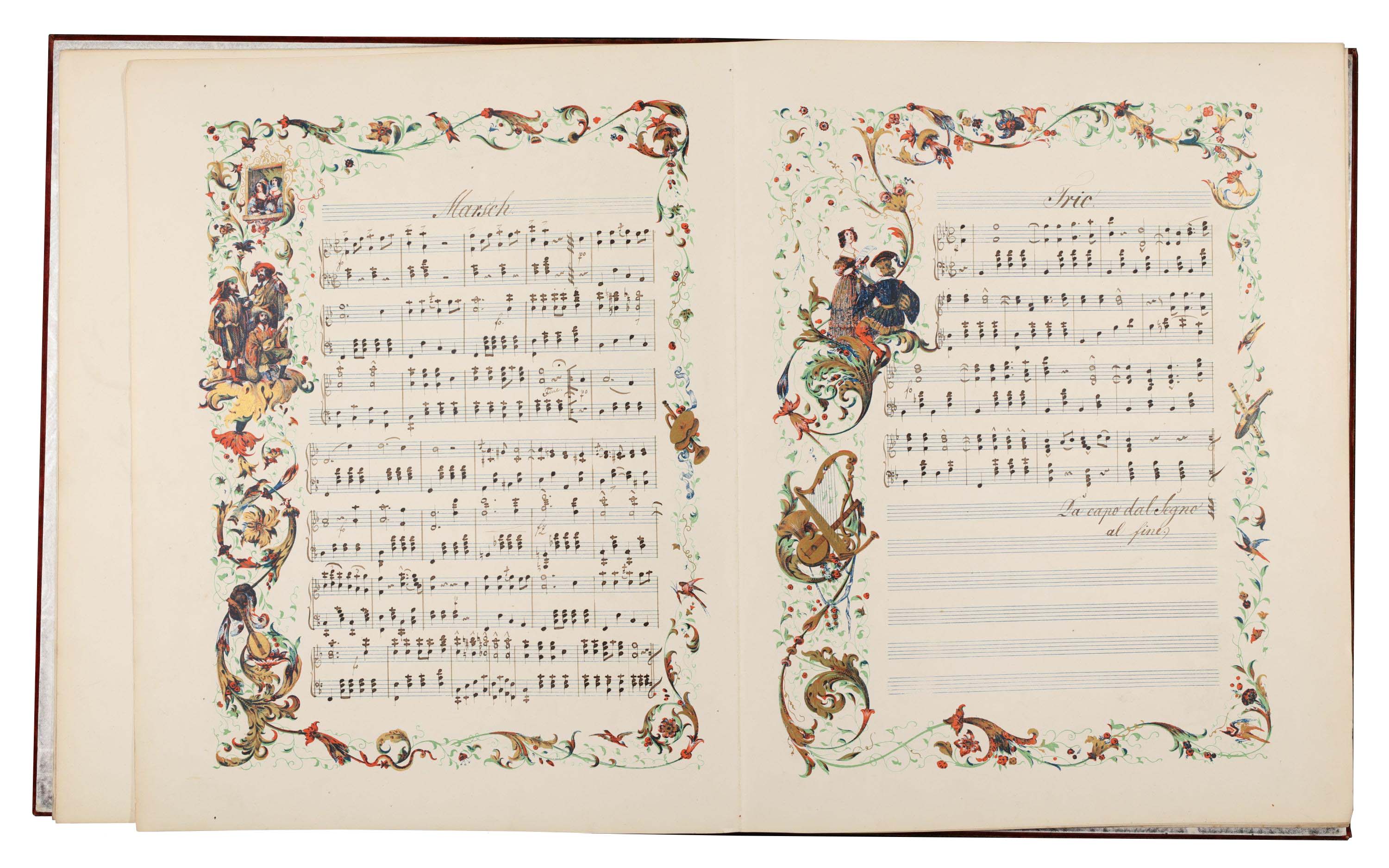A march and a trio for piano are titled "The Mossy Medical March". The musical manuscript by the bandmaster of the Medical Legion Romeo Kosak (1822–1904) is lavishly decorated with multicolored symbolic images and bound in gold-printed red velvet. It is dedicated to Emperor Ferdinand I (1793–1875) on his name day on May 30th.
About the collection
The core of the documents collection is the holding of various types of papers originally designated the Manuscript Collection, which includes correspondence, lecture notes, medical diaries, certificates and prescriptions, as well as printed circulars and reports. The extensive collection of sources was begun by Max Neuburger and continuously expanded such that it now documents some 300 years of the history of medicine.
These documents have been supplemented by a number of bequests from doctors. Some particularly important examples of these are the bequests from Julius Tandler, Julius Wagner-Jauregg and Guido Holzknecht, to name just a few. Theodor Billroth’s autograph collection is also worthy of mention. It contains over 300 letters and was provided by the College of Physicians.
The collection also includes certificates, coins and medals with connections to medicine.





Letter from Sigmund Freud to Julius von Wagner-Jauregg with congratulations on his 75th birthday.
Handwritten notes in Georg Josef Beer's eye diseases album, which he dedicated to the First Eye Clinic in Vienna.
This manuscript by Karl von Rokitansky (1804-1878) is the basis for his three-volume main work "Handbook of Pathological Anatomy", published between 1842 and 1846.
The script for the physiology course around 1912 in Vienna belonged to the “hearer of medicine” Ludwig Friedrichs. He learns the core subject of physiology using the script, which is intricately designed in the Art Nouveau style.

